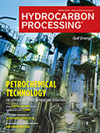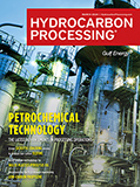Heat Transfer
Fouling monitoring and prediction of heat exchangers via simulations powered by AI-driven models
Hydrocracker units are the most valuable conversion facilities in refineries. The outcome is the conversion of a variety of feedstocks to a range of products—the units that produce those products can be found at various points throughout a refinery.
Innovations
Endress+Hauser’s newly developed iTEMP TMT31 temperature transmitter (FIG. 1) for analog 4-20mA signals is characterized by its long-term stability, high accuracy and ease of use for reliable temperature measurement.
Sensitivity analysis of a shell-and-tube heat exchanger
Sensitivity analyses evaluate the effects of changes in certain variables on project simulations or investment economics.1
Cut emissions and fuel while increasing capacity in fired heaters
According to a recent digital refining article,1 fired heaters are responsible for an estimated 400 MMtpy–500 MMtpy of CO<sub>2</sub>, with at least 73% of average refinery CO<sub>2</sub> emissions coming from combustion.
Mechanical design challenges in high-temperature electric heaters
Electric heaters are used in the process industries as an alternative to fired heaters or process heaters—where the heating medium is either steam or any heating fluid—for some specific applications where the process duties are low but fluids are heated to high temperature.
Air-cooled heat exchanger under natural convection
Determining whether or not to operate an air-cooled heat exchanger (ACHE) under natural convection is a challenge due to the limited information available for simulations of an ACHE under operation without fans.
2022 HP Awards Finalists
<em>Hydrocarbon Processing</em>, the downstream processing sector’s leading technical publication for 100 yr, has announced the finalists for its sixth annual <em>HP</em> Awards, which celebrate innovative technologies and people that have been instrumental in improving facility operations over the past year.
Case studies: Evaluation of the soundness and remaining life of PSA vessels with weld defects
Multiple defects were found in pressure swing adsorption (PSA) vessels during an outage of one of four PSA process units.
Sustainable steel/chemicals production: Removal of impurities for valorization of steel mill gases
Industry faces significant challenges relating to the transition toward cleaner energy and more sustainable feedstocks.
Use CFD analysis to evaluate the impact of hot air recirculation on air-cooled heat exchangers
Air-cooled heat exchangers are widely used in the petroleum, petrochemical, natural gas and other industries for cooling purposes. In contrast to a water-cooled system, which consists of a traditional shell-and-tube heat exchanger and a cooling tower, an air-cooled heat exchanger uses ambient air as the main cooling medium.

- Brazil's Timbro to export 40% more sugar, enter ethanol market in 2024 4/24
- LG Chem denies report it will merge naphtha cracker business with Lotte Chemical 4/24
- Crude and gasoline stocks fell, distillate stocks rose last week, EIA says 4/24
- INERATEC secures state-of-the-art catalysts from Sasol for the production of sustainable e-fuels 4/24
- JX to join forces with Sumitomo at large scale SAF/BECCS project in Louisiana (U.S.) 4/24
- WestJet buys first Canadian-supplied SAF by Shell Aviation 4/23




